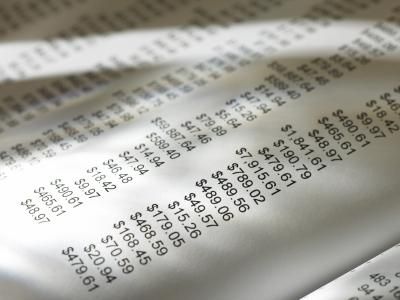Overview
Descriptive statistics are measurements of a data set that summarize information about the raw scores. Some types include distributions of scores, measures of central tendency, and measures of variability.
Distributions of Scores
Data can be organized into frequency distributions of various types. Suppose 100 students were given a 20-item rating scale called the Test Anxiety Inventory. Students in the sample rated themselves on each of the items, with a lowest possible score of 20 and a highest possible score of 80. It is not easy to see relationships between the raw scores in a group of 100, and would be even more difficult if there were more scores.
Graphed Distributions
|
Figure 1: This graph shows all 100 scores, from lowest to highest. |
Frequency distributions are often presented graphically, to display a picture of the data. They may be organized in a bar graph (also called a histogram) or a frequency polygon. It is easy to see the relationships between data points. The shape of the frequency distribution also presents useful information about the data themselves.
Measures of Central Tendency
The most common measures of central tendency are the mean, median, and the mode. The mean score is another word for the average score. It is calculated by adding up all the scores and dividing by the number of scores. A symbol for adding up all the scores is the summation sign, the Greek capital letter sigma ∑. The average is calculated as ∑/n, where the summation is all the scores in the data set S and n is the number of scores in the sample. In the example of Test Anxiety scores, n = 100. Other measures of central tendency include the median, the middle term in a set of scores when they are arranged in increasing order, and the mode, which is the most frequently occurring score. In this example the mean is 41.64, the median is 41, and the mode is 40. Scores range from a low of 22 to a high of 73.
Measures of Variability
One other descriptive statistic that is very powerful is the measurement of how variable the scores are. Are they close to the mean or are they more spread out? The standard deviation formula uses the distance of each score from the mean, and the size of the sample as an unbiased estimate of the amount of variation. In the formula below, another way to represent the mean is by x with a line on the top of it. The standard deviation (abbreviated SD) is equal to the square root of [(the summation of the distances of every score from the mean) squared divided by the number of scores in the sample]. It is easily calculated, any many scientific calculators have special keys and sequences for statistical calculations, although they can be done with a regular calculator without special keys. It just takes time to work through the calculations. The standard deviation that is calculated for this example set of scores is 8.61.
|
Figure 2: The standard deviation formula. |
Interested in statistics tutoring services? Learn more about how we are assisting thousands of students each academic year.
SchoolTutoring Academy is the premier educational services company for K-12 and college students. We offer tutoring programs for students in K-12, AP classes, and college. To learn more about how we help parents and students in Eugene, OR: visit Tutoring in Eugene, OR





